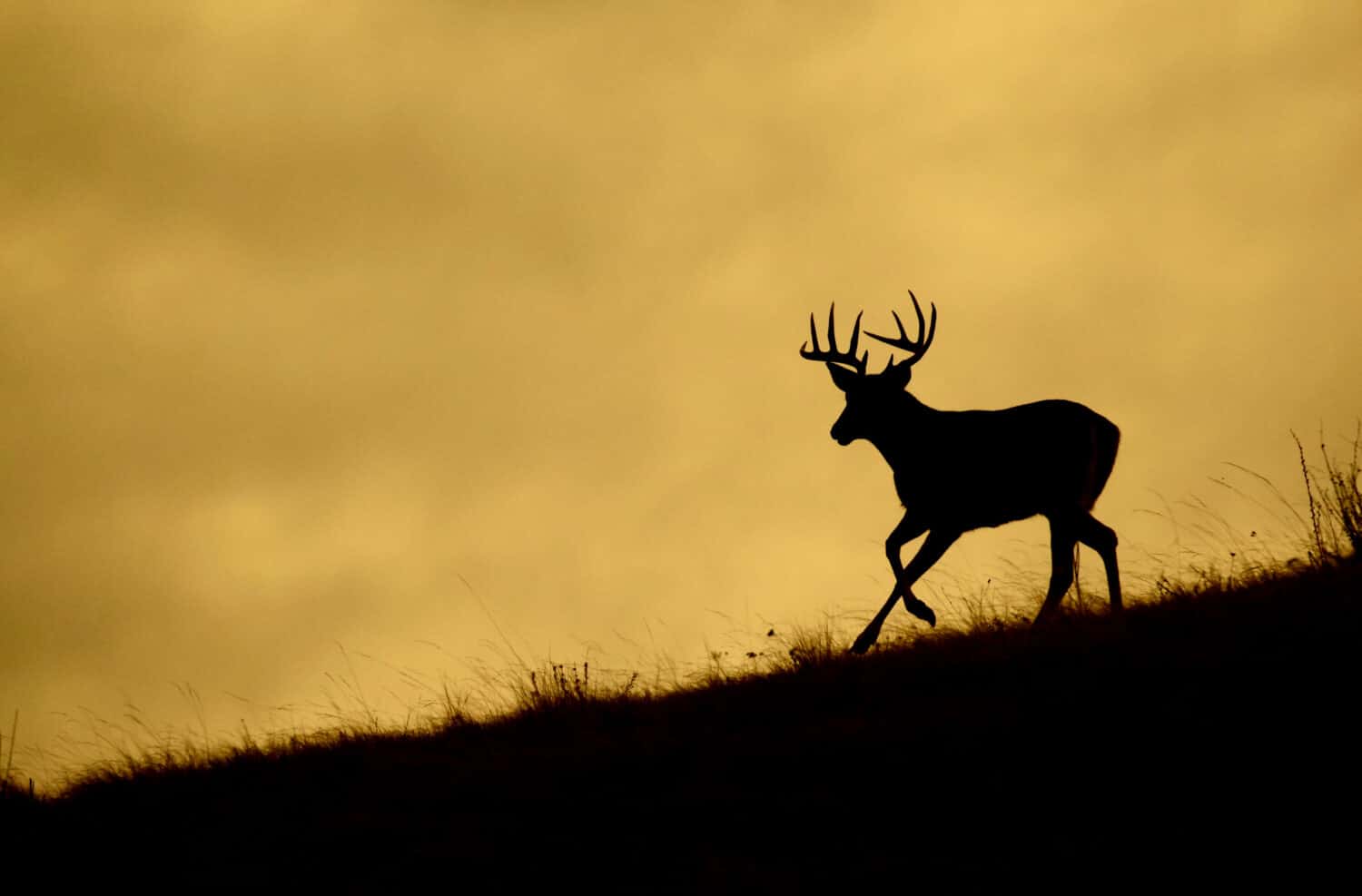Deer hunting is a rite of passage for many. But for those living in New York State, hunting is akin to a religion. Travel to the Catskill Mountains, the Adirondacks, or to the Southern Tier during the fall and see for yourself. Hunted bucks tied to the hoods of cars are common, as are pick-up trucks with hunting rifles hooked to the rear windshield. Eavesdrop on watering hole conversations between hunters, and you will most likely overhear stories about their adventures — real and imagined.
Yup, it wouldn’t be an overstatement to say that New Yorkers take their deer hunting seriously. Many will go out just for a day, while others will lodge for weeks in rustic camps carved into dense forests. Some are crazy enough to hike three, four, perhaps five miles into the woods, bag their quarry, and drag their harvest to civilization by themselves.
Big Business
Moreover, deer hunting is a big business. In 2022, the Sportsmen’s Alliance published a report that analyzed the economic impact of deer hunting. It found that in 2020, hunters and sport shooters contributed $149 billion to the U.S. economy. They also supported around 970,000 jobs, which created $45 billion in income and wages.
In New York, the numbers tell the same story. According to the state Department of Environmental Conservation (DEC), which, among other things, oversees hunting in the Empire State, there are more than 500,000 deer hunters that, in totality, contribute nearly $1.5 billion to the state’s economy. They also support the state’s deer management activities by paying taxes and purchasing hunting licenses. Each year, the DEC says, hunters harvest about 220,000 deer. What makes the state such a deer hunters’ paradise? Here are six reasons New York is the ideal spot for deer hunting in the United States.
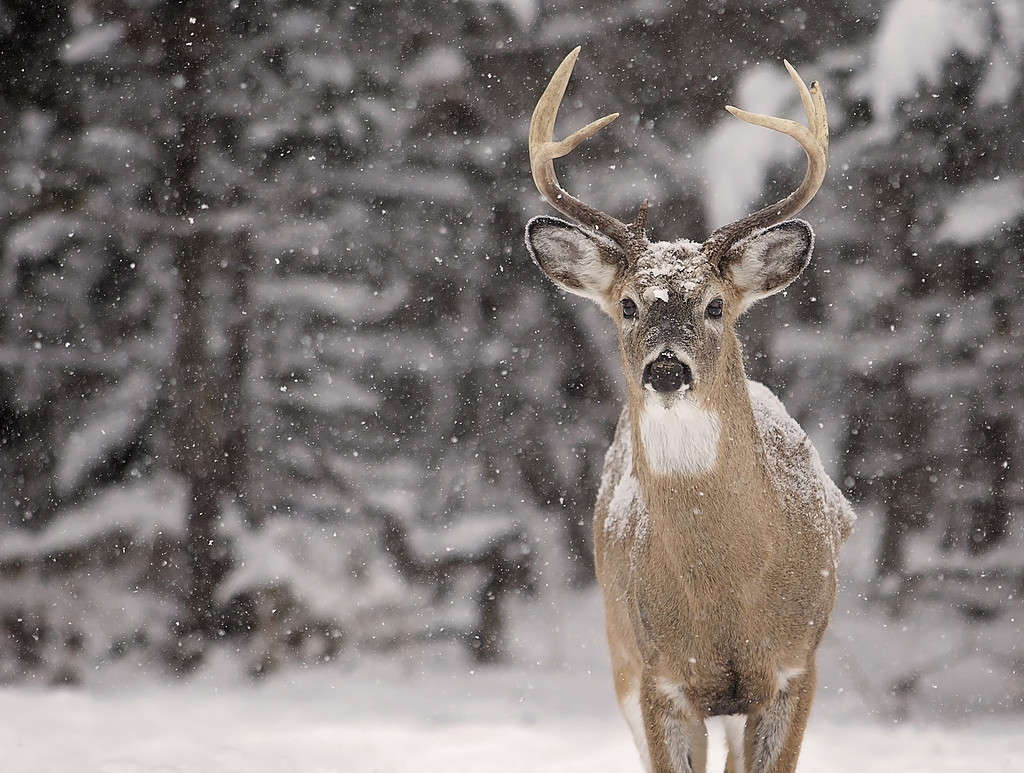
Close-up image of a white-tailed deer buck.
©Lynn_Bystrom/iStock via Getty Images
1. A Long History
The white-tail deer population in New York is inextricably tied to how people used and developed the land. Although little is known about the white-tail population when Indigenous people lived in the region, the animal was an important source of food and clothing for the first European settlers.
However, once these pioneers started to build communities, they showed little concern for the animals. They cleared habitat with abandon, and by the middle of the 1800s, the white-tail was threatened with extermination, except for those living in wilderness areas.
Yet, there was a bright spot as two state biologists, W. Severinghaus and C.P. Brown, noted in 1956 in their book “The History of the White-Tailed Deer in New York.” “…as the poorer farm lands were abandoned deer exhibited a remarkable ability to adapt themselves to the change in environment and reoccupied most of their former range,” the biologists wrote.
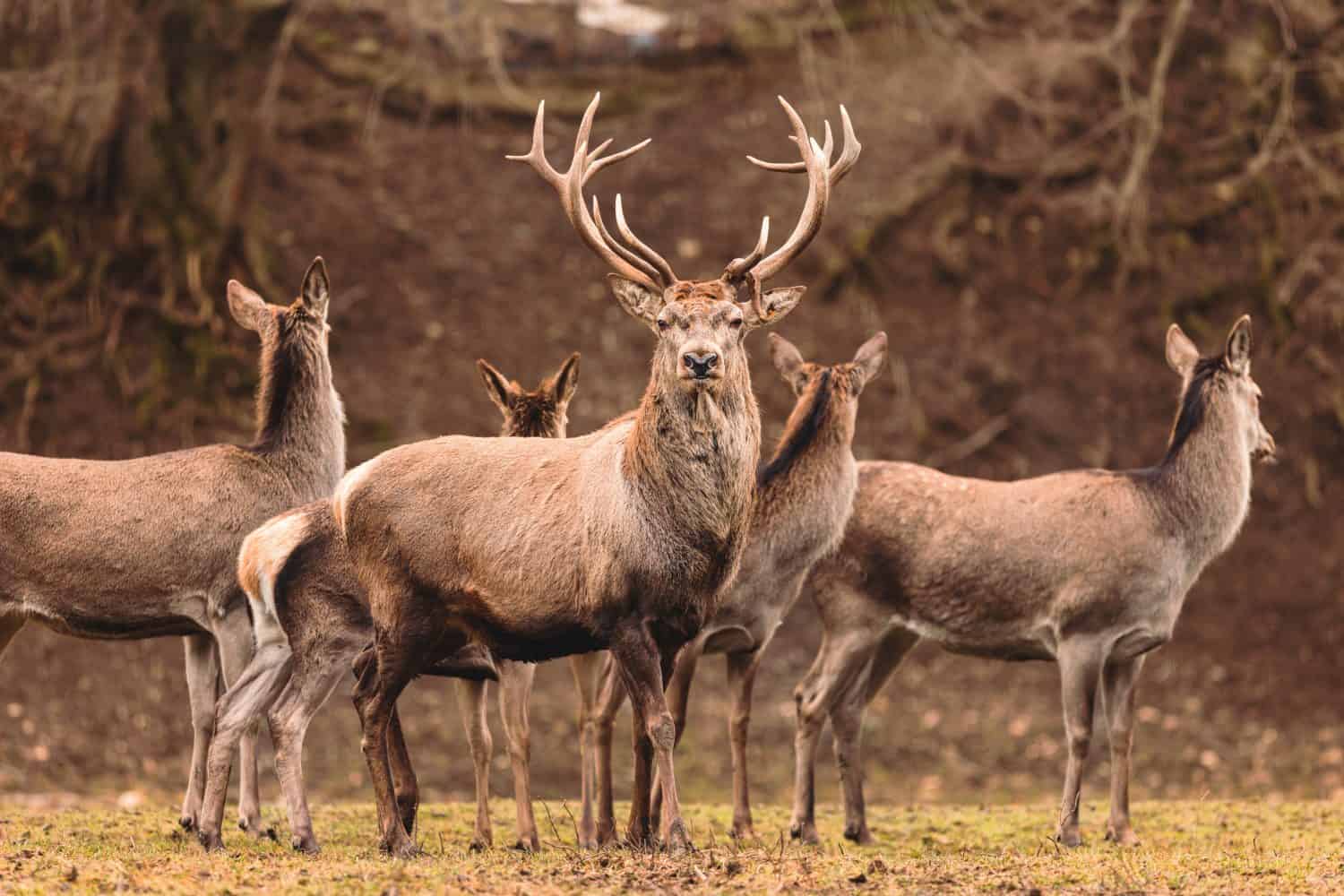
Settlers from Europe nearly killed off the deer population.
©MAD.vertise/Shutterstock.com
2. Different Ways to Hunt
Autumn, from mid-September to the end of December, is deer season in New York state, although the exact dates hunting can begin can vary depending on each hunting zone. (More on zones later.) Hunters in New York can hunt with a bow and arrow, a muzzleloader, and a regular firearm. Each has specific rules, permits, and licenses.
Some areas, especially near the larger cities, forbid deer hunting. In a few instances, each county has its own regulations, such as how many deer a hunter can take. Luckily, New York’s Department of Environmental Conservation provides hunting guides, zone maps, and information on various licenses and permits.
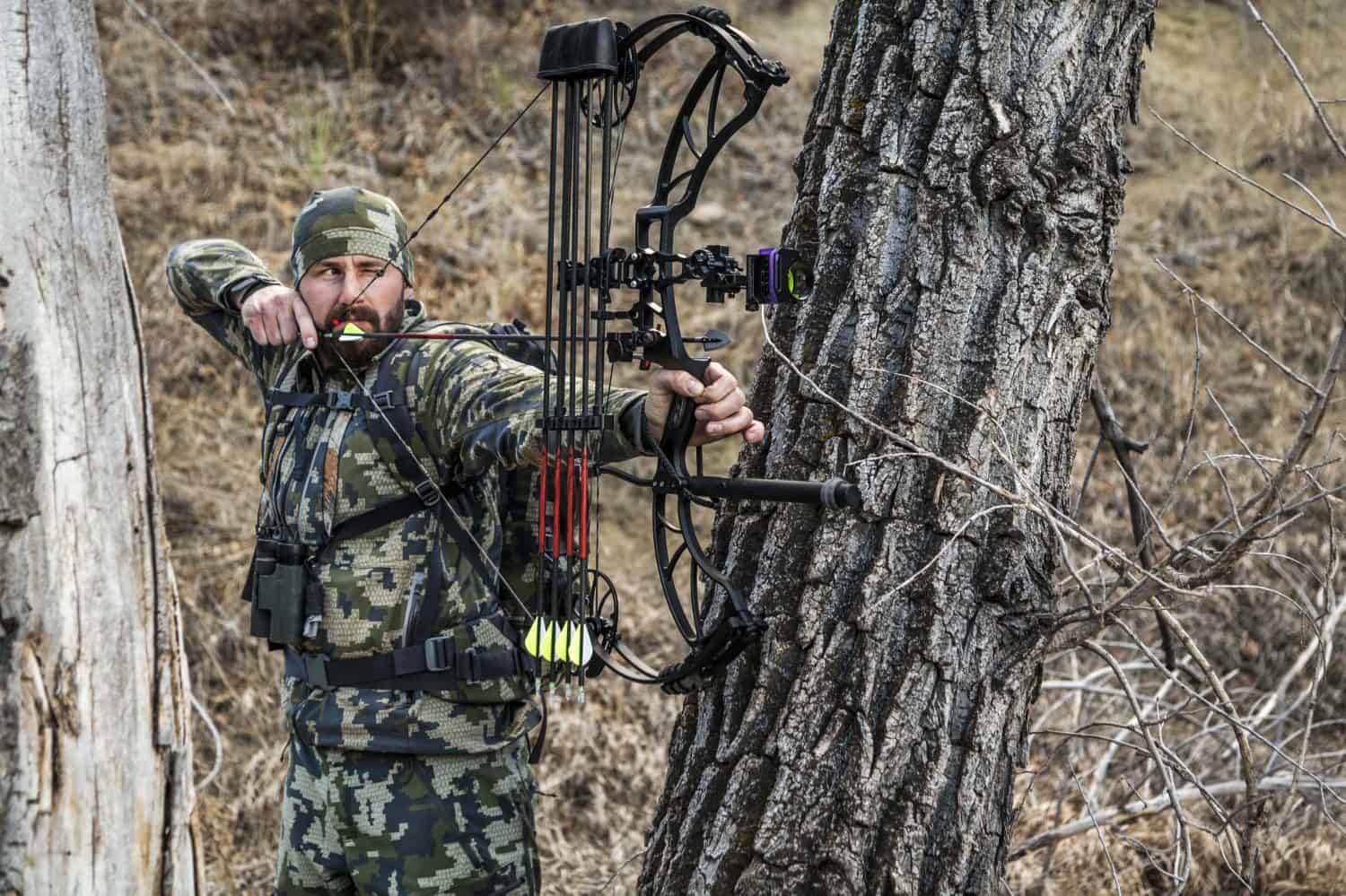
Many in New York use bows and arrows when they hunt.
©Neil Podoll/Shutterstock.com
3. Population
White-tail deer are obsequious in New York. Estimates put its population at 1.2 million, or 22 deer per square mile. That’s a significant number. It wasn’t that long ago that deer were rarely seen. It was only in the 1930s when Western New York and the Southern Tier counties began to have deer hunting seasons.
The white-tail deer, with its tell-tale behind, stands more than three-and-a-half feet at the shoulders. Males can tip the scales at 300 pounds, although most are not nearly that heavy. White-tail deer often lurk between fields and the forest, although their habitats can change.
During the 2022-23 hunting season, according to the state Department of Environmental Conservation, hunters harvested 231,961 whitetails, a 10-percent increase over the previous season. Among those were 116,424 bucks with antlers and 115,536 without. The antlered buck harvest was 5 percent more than the 2021-2022 season, while the harvest for those without antlers increased 15 percent.
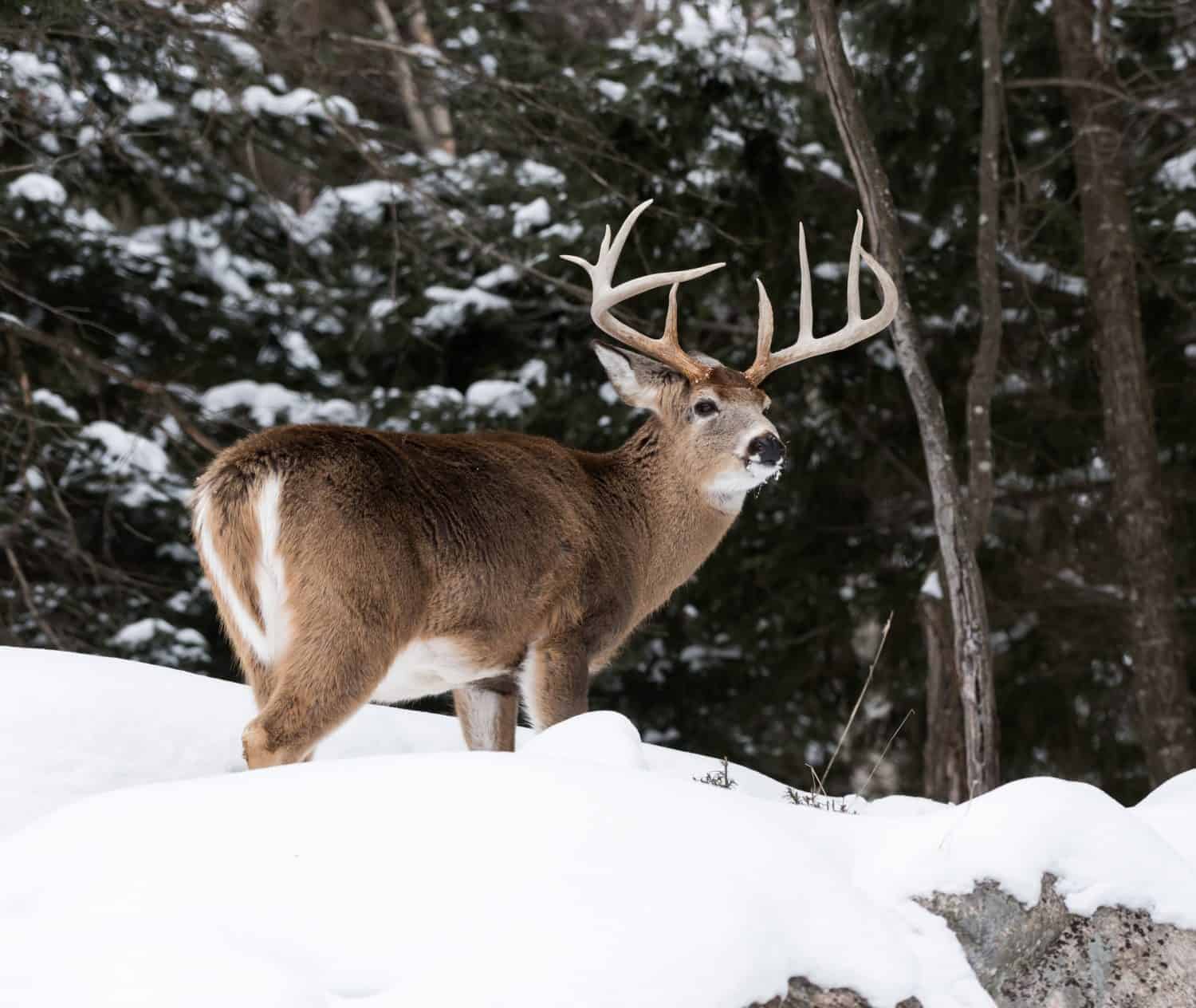
The antlered buck harvest in New York in 2022-2023 was 5 percent more than the 2021-2022 season.
©FotoRequest/Shutterstock.com
4. Density
When it comes to deer hunting, the state is sliced into two distinctive zones: Northern and Southern. The Northern Zone encompasses many of the counties near the Canadian border, including Clinton, Franklin, Jefferson, St. Lawrence, and Essex. Many of these communities lie within the Adirondack Park, a wilderness of 6 million acres of public and private land.
The Southern Zone includes every county (and parts of others) below the Northern Zone, including those in Western New York, Central New York, the Catskill Region, the Southern Tier (near the Pennsylvania border), Long Island, and the counties north of New York City including Westchester, Putnam, Rockland, and Ulster.
The density of deer in these areas fluctuates. In the Northern Zone, for example, the number of bucks taken in 2022 ranged from less than 1 per square mile in some areas of the Adirondacks to 2.1 to 3.0 or more in the Southern Zone. Out in Western New York, from the banks of Lake Ontario to the border with Pennsylvania, the buck population density ranges from 4.1 to more than 5.1 per square mile.
Age and Antlers
In the Adirondacks, the ratio of all white-tailed deer (those with and without antlers) harvested in 2022 ranged from 0 to 1, while in some areas in the western part of the state, the harvest skyrocketed to 2.5. In the 62 counties in the state, the total deer harvest in 2022 was the highest in Chautauqua County (10,515), while the lowest was in Rockland County (345).
Interestingly, the number of adult bucks harvested by age has decreased. In 2001, 60 percent of adult bucks were, on average, 1.5 years old. That number has dropped significantly. It is now around 30 percent. Today, more than 30 percent of adult bucks harvested are, on average, 2.5 years old.
Some counties have more white-tail deer than others. In Steuben County, for instance, there are 5 adult males per square mile, while in Westchester, there are 1.2 males per square mile.
5. Habitat
New York’s landscape varies. In addition to coastal areas, such as those in Long Island, New York is home to mountainous regions, valleys, and numerous lakes, streams, and rivers. White-tail deer do not thrive in dense forests, which New York has in spades. But they do like areas that border the woodlands, especially clearings by lakes, rivers, and streams, of which New York has plenty. It is in these areas that the animals find the food (they are herbivores) they need to survive.
When it gets colder during the winter, they will seek out stands of conifers, yet they still won’t shelter in the dense forest.
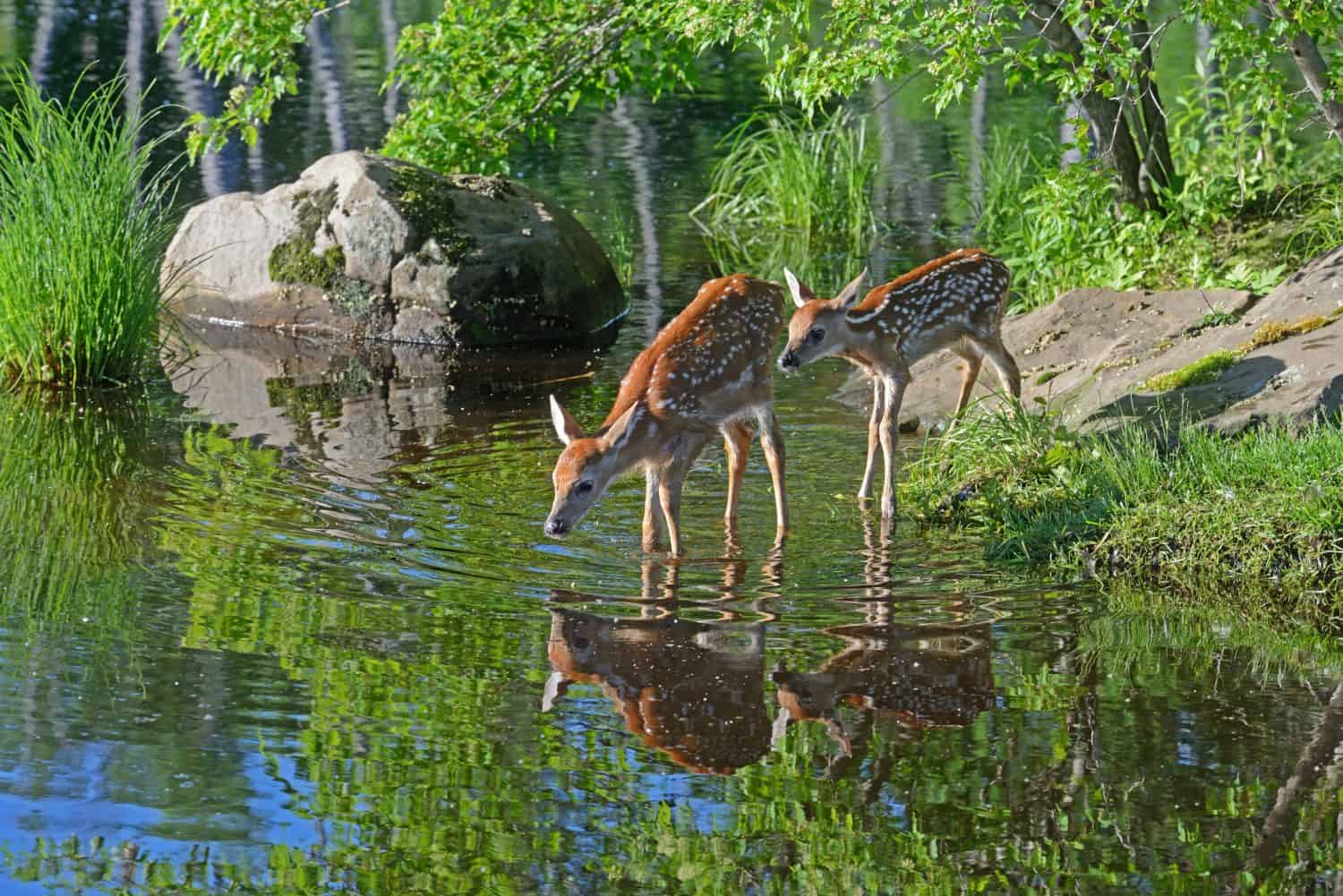
White-tail deer will stay away from deep forests and forage in clearings by lakes and streams.
©Betty Shelton/Shutterstock.com
6. Management
Since New York teems with deer, the state tries to manage the population. That job falls to the DEC, which carefully controls the number of deer hunters can harvest. Through raising and lowering that number, wildlife officials can either increase or decrease the local deer population.
In 2021, the state updated its master deer management plan. Some of the steps the state currently takes include:
- Figuring out the deer population and understanding how the animals impact the regeneration of the forests.
- Keeping track of the impact of disease and taking steps to mitigate the effects.
- Giving hunters additional opportunities in certain locations to increase the harvest of antlerless deer.
- Giving hunters more choices to harvest older bucks with antlers so they can don’t hunt younger, antlered males.
- Asking hunters not to use lead ammunition, which can lead to health problems in other animal species.
- Working with towns, cities, and villages to prevent the overpopulation of deer in communities.
Thank you for reading! Have some feedback for us? Contact the AZ Animals editorial team.

